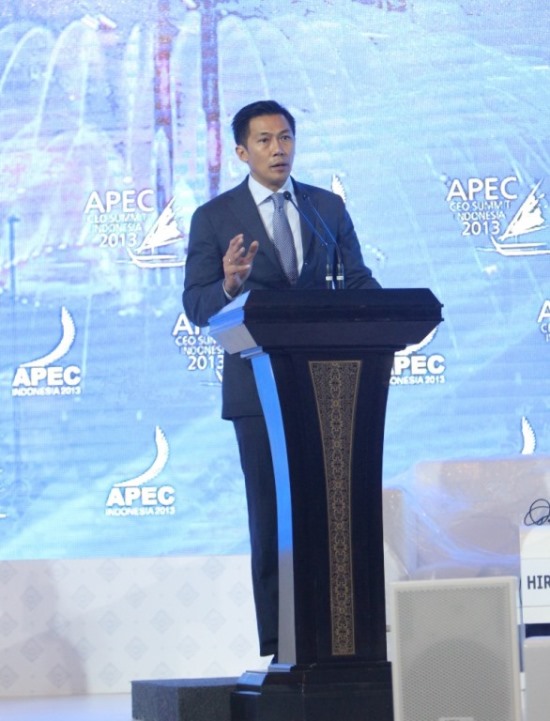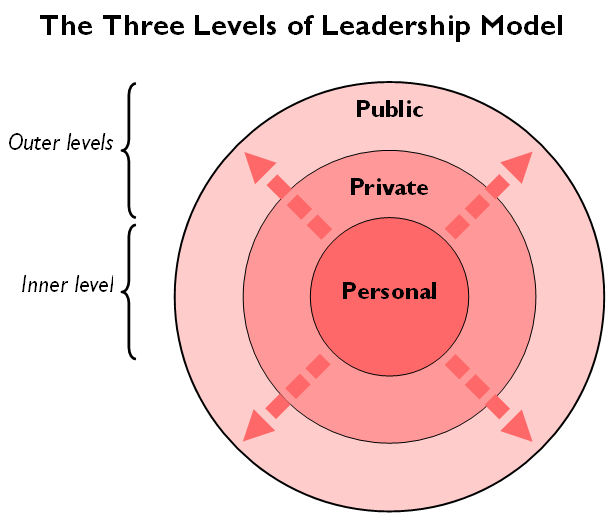|
Situational Leadership Model
The Situational Leadership Model is the idea that effective leaders adapt their style to each situation. No one style is appropriate for all situations. Leaders may use a different style in each situation, even when working with the same team, followers or employees. Most models use two dimensions on which leaders can adapt their style: *''"Task Behavior"'': Whether the leader is giving more direction or giving more autonomy. *''"Relationship Behavior"'': Whether the leader is working closely with the follower or more at arms length. Theory As explained by Dr. Paul Hersey, the creator of the Situational Leadership framework, ""There is no such thing as Situational Leadership Theory! A theory gives you something interesting to think about. Situational Leadership is a model. A model is a repeatable framework that provides you with a roadmap on what to do." The Situational Leadership Model was created by Dr. Paul Hersey and Dr. Ken Blanchard while working on the text book, ' ... [...More Info...] [...Related Items...] OR: [Wikipedia] [Google] [Baidu] |
Paul Hersey
Paul Hersey (January 26, 1931–December 18, 2012) was a behavioral scientist and entrepreneur. He was best known for conceiving Situational leadership theory, Situational Leadership. Hersey published ''Management of Organization Behavior'', which is now in its ninth edition. Hersey taught about training and development in leadership, management, and selling. He was also a consultant to industrial, government, and military organizations. Hersey was born in 1931 to Ralph Emerson Hersey and Beatrice Bromell. He was a Distinguished Professor of Leadership Studies at Nova Southeastern University. He had been a faculty member of Northern Illinois University, California State University, Chico, University of Arkansas, and Ohio University. He also served in the roles of Chairman of the Department of Management and Dean of the School of Business. Hersey had also served as Project Director for the Industrial Relations Center of the University of Chicago, Training Director at Kaiser Alumi ... [...More Info...] [...Related Items...] OR: [Wikipedia] [Google] [Baidu] |
Ken Blanchard
Kenneth Hartley Blanchard (born May 6, 1939) is an American author, business consultant and motivational speaker who has written more than 70 books, most of which were co-authored. His most successful book, '' The One Minute Manager'', has sold more than 15 million copies and been translated into many languages. He is the co-creator with Dr. Paul Hersey of Situational Leadership, a theory they developed while working on the textbook ''Management of Organizational Behavior''. Blanchard is the Chief Spiritual Officer of Blanchard, an international management training and consulting firm that he and his wife, Marjorie Blanchard, co-founded in 1979 in San Diego, California. Education Blanchard attended New Rochelle High School, and graduated in 1957. He completed a BA degree in government and philosophy at Cornell University in 1961, an MA degree in sociology and counseling at Colgate University in 1963 and a PhD degree in education administration and leadership at Cornell U ... [...More Info...] [...Related Items...] OR: [Wikipedia] [Google] [Baidu] |
Leadership And The One Minute Manager
Leadership, is defined as the ability of an individual, group, or organization to "", influence, or guide other individuals, teams, or organizations. "Leadership" is a contested term. Specialist literature debates various viewpoints on the concept, sometimes contrasting Eastern and Western approaches to leadership, and also (within the West) North American versus European approaches. Some U.S. academic environments define leadership as "a process of social influence in which a person can enlist the aid and support of others in the accomplishment of a common and ethical task". In other words, leadership is an influential power-relationship in which the power of one party (the "leader") promotes movement/change in others (the "followers"). Some have challenged the more traditional managerial views of leadership (which portray leadership as something possessed or owned by one individual due to their role or authority), and instead advocate the complex nature of leadership w ... [...More Info...] [...Related Items...] OR: [Wikipedia] [Google] [Baidu] |
Behavior
Behavior (American English) or behaviour (British English) is the range of actions of Individual, individuals, organisms, systems or Artificial intelligence, artificial entities in some environment. These systems can include other systems or organisms as well as the inanimate physical environment. It is the computed response of the system or organism to various stimuli or inputs, whether internal or external, conscious or subconscious, overt or covert, and voluntary action, voluntary or Volition (psychology), involuntary. While some behavior is produced in response to an organism's environment (extrinsic motivation), behavior can also be the product of intrinsic motivation, also referred to as "agency" or "free will". Taking a behavior informatics perspective, a behavior consists of actor, operation, interactions, and their properties. This can be represented as a behavior Euclidean vector, vector. Models Biology Definition Behavior may be defined as "the internally coordin ... [...More Info...] [...Related Items...] OR: [Wikipedia] [Google] [Baidu] |
Two-factor Theory
The two-factor theory (also known as motivation–hygiene theory, motivator–hygiene theory, and dual-factor theory) states that there are certain factors in the workplace that cause job satisfaction while a separate set of factors cause dissatisfaction, all of which act independently of each other. It was developed by psychologist Frederick Herzberg. Fundamentals Feelings, attitudes and their connection with industrial mental health are related to Abraham Maslow's theory of motivation. His findings have had a considerable theoretical, as well as a practical, influence on attitudes toward administration. According to Herzberg, individuals are not content with the satisfaction of lower-order needs at work; for example, those needs associated with minimum salary levels or safe and pleasant working conditions. Rather, individuals look for the gratification of higher-level psychological needs having to do with achievement, recognition, responsibility, advancement, and the nature of ... [...More Info...] [...Related Items...] OR: [Wikipedia] [Google] [Baidu] |
Managerial Grid Model
The managerial grid model or managerial grid theory (1964) is a model, developed by Robert R. Blake and Jane Mouton, of leadership styles. This model originally identified five different leadership styles based on the ''concern for people'' and the ''concern for production''. The optimal leadership style in this model is based on Theory Y. The grid theory has continued to evolve and develop. The theory was updated with two additional leadership styles and with a new element, resilience. In 1999, the grid managerial seminar began using a new text, ''The Power to Change''. The model is represented as a grid with ''concern for production'' as the x-axis and ''concern for people'' as the y-axis; each axis ranges from 1 (Low) to 9 (High). The resulting leadership styles are as follows: * The indifferent (previously called impoverished) style (1,1): evade and elude. In this style, managers have low concern for both people and production. Managers use this style to preserve ... [...More Info...] [...Related Items...] OR: [Wikipedia] [Google] [Baidu] |
William James Reddin
William James Reddin also known as Bill Reddin (May 10, 1930 – June 20, 1999) was a British-born management behavioralist, theorist, writer, and consultant. His published works examined and explained how managers in profit and non-profit organizations behaved under certain situations and conditions. The focus of his work was to understand to what extent managers were effective in their role and successful in managing situations to have the right impact on the organization's objectives. Through extensive research Reddin concluded that there is no ideal management style. He put forward that there was only one realistic and unambiguous definition of managerial effectiveness, the extent to which a manager or leader achieves the output requirements of the position. This is the manager's or leader's only job: to be effective. Reddin was often quoted as saying both in his writings, to his clients and to his students, that there is no ideal style of managing; and there is no one way ... [...More Info...] [...Related Items...] OR: [Wikipedia] [Google] [Baidu] |
Contingency Theory
A contingency theory is an organizational theory that claims that there is no best way to organize a corporation, to lead a company, or to decision making, make decisions. Instead, the optimal course of action is contingent (dependent) upon the internal and external situation. Contingent leaders are flexible in choosing and adapting to succinct strategies to suit change in situation at a particular period in time in the running of the organization. History The contingency approach to leadership was influenced by two earlier research programs endeavoring to pinpoint effective leadership behavior. During the 1950s, researchers at Ohio State University administered extensive questionnaires measuring a range of possible leader behaviors in various organizational contexts. Although multiple sets of leadership behaviors were originally identified based on these questionnaires, two types of behaviors proved to be especially typical of effective leaders: ''(1) consideration'' leader behav ... [...More Info...] [...Related Items...] OR: [Wikipedia] [Google] [Baidu] |
Three Levels Of Leadership Model
The Three Levels of Leadership is a leadership model formulated in 2011 by James Scouller. Designed as a practical tool for developing a person's leadership presence, knowhow, know-how and skill. It aims to summarize what leaders have to do, not only to bring leadership to their group or organization, but also to develop themselves technically and psychologically as leaders. It has been classified as an "Leadership#Integrated psychological theory, integrated psychological" theory of leadership. It is sometimes known as the 3P model of leadership (the three Ps standing for Public, Private and Personal leadership). The Three Levels of Leadership model attempts to combine the strengths of older leadership theories (i.e. Leadership#Early Western history, traits, Leadership#Behavioral_and_style_theories, behavioral/styles, Leadership#Situational and contingency theories, situational, Leadership#Functional theory, functional) while addressing their limitations and, at the same time, of ... [...More Info...] [...Related Items...] OR: [Wikipedia] [Google] [Baidu] |
Trait Leadership
Trait leadership is defined as integrated patterns of personal characteristics that reflect a range of individual differences and foster consistent leader effectiveness across a variety of group and organizational situations. The theory is developed from early leadership research which focused primarily on finding a group of heritable attributes that differentiate leaders from nonleaders. Leader effectiveness refers to the amount of influence a leader has on individual or group performance, followers’ satisfaction, and overall effectiveness. Many scholars have argued that leadership is unique to only a select number of individuals, and that these individuals possess certain immutable traits that cannot be developed. Although this perspective has been criticized immensely over the past century, scholars still continue to study the effects of personality traits on leader effectiveness. Research has demonstrated that successful leaders differ from other people and possess certain co ... [...More Info...] [...Related Items...] OR: [Wikipedia] [Google] [Baidu] |


